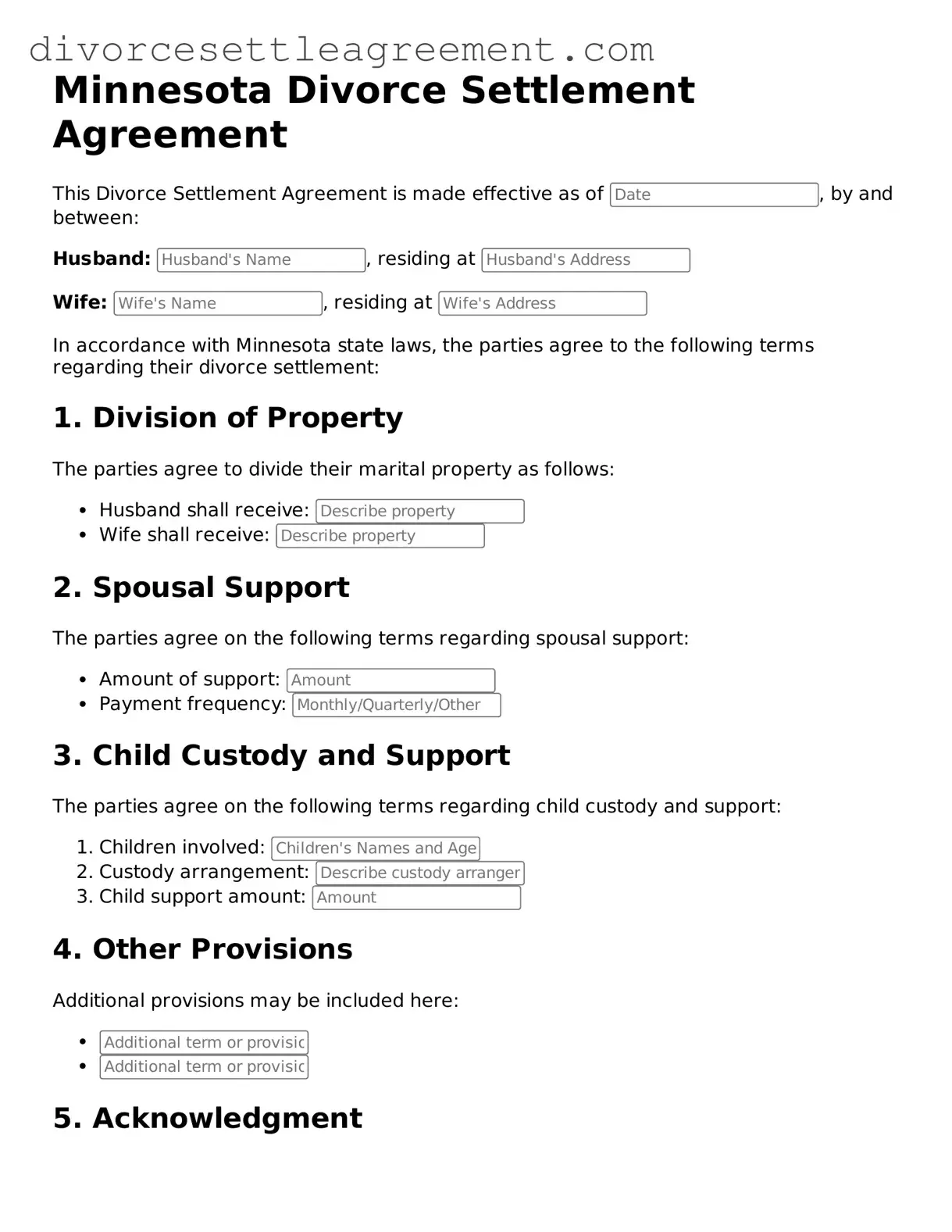What is a Minnesota Divorce Settlement Agreement form?
The Minnesota Divorce Settlement Agreement form is a legal document that outlines the terms agreed upon by both spouses regarding the division of assets, debts, child custody, and support during a divorce. This form serves as a comprehensive record of the decisions made by both parties and is submitted to the court for approval as part of the divorce process.
Who needs to complete this form?
Both spouses involved in a divorce in Minnesota must complete the Divorce Settlement Agreement form if they wish to formalize their agreements regarding financial and custodial matters. It is essential for those seeking an uncontested divorce, where both parties agree on the terms, to utilize this form.
What are the key components of the form?
The key components of the Minnesota Divorce Settlement Agreement form typically include sections addressing property division, debt allocation, child custody arrangements, child support, and spousal maintenance. Each section must be filled out accurately to reflect the agreements made by both parties.
How does one fill out the form?
To fill out the form, both spouses should gather all relevant financial information, including assets, debts, and income. They should then discuss and agree on how to divide these items. It is advisable to complete the form in a clear and organized manner, ensuring that all necessary details are included to prevent misunderstandings later.
Is legal assistance required to complete the form?
While it is not legally required to have an attorney when completing the Minnesota Divorce Settlement Agreement form, seeking legal assistance can be beneficial. An attorney can provide guidance, ensure that the agreement is fair and compliant with state laws, and help prevent potential disputes in the future.
What happens after the form is completed?
Once the Divorce Settlement Agreement form is completed and signed by both parties, it must be filed with the court as part of the divorce proceedings. The court will review the agreement to ensure it is fair and reasonable before granting the divorce. If approved, the terms outlined in the agreement will become enforceable by law.
Can the agreement be modified after it is submitted?
Yes, the Divorce Settlement Agreement can be modified after submission, but both parties must agree to the changes. If circumstances change significantly, such as a change in income or living situation, a modification may be necessary. This would typically require filing a motion with the court to amend the original agreement.
What if one party does not agree to the terms?
If one party does not agree to the terms outlined in the Divorce Settlement Agreement, the divorce cannot proceed as an uncontested case. The parties may need to negotiate further or consider mediation. If an agreement cannot be reached, the case may proceed to a contested divorce, where a judge will make the final decisions.
Are there any fees associated with filing the form?
Yes, there are typically court fees associated with filing the Divorce Settlement Agreement form. These fees can vary depending on the county in which the divorce is filed. It is advisable to check with the local court for specific fee amounts and any potential waivers that may be available for those with financial difficulties.
Where can I obtain the Divorce Settlement Agreement form?
The Minnesota Divorce Settlement Agreement form can be obtained from the Minnesota Judicial Branch website or directly from the local courthouse. Many counties also provide resources and assistance for individuals seeking to complete the form correctly.
